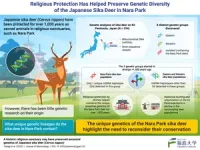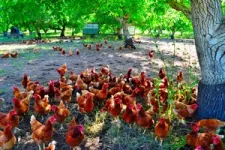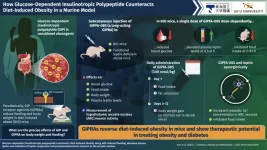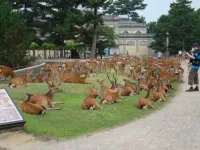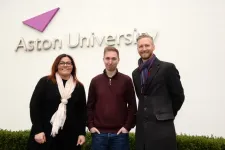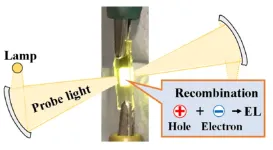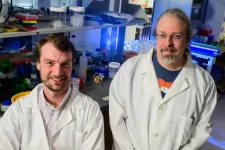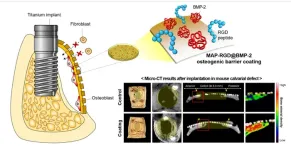(Press-News.org) Joan Martinez-Alier is Professor Emeritus at the Institute of Environmental Science and Technology, at the Universitat Autònoma de Barcelona (ICTA-UAB). He will receive the award of NOK 6,000,000 (approx. EUR 550,000) during an 8 June ceremony at the University of Bergen, Norway.
Martinez-Alier receives the Holberg Prize for his ground-breaking research in ecological economics, political ecology and environmental justice. He is known for criticizing established economic theory and traditional approaches to economic growth. Martinez-Alier is also a major figure and leading public intellectual in the burgeoning movement for ’degrowth’.
Degrowth emphasizes the need to reduce global consumption and production and advocates the replacement of GDP as the indicator of prosperity with measurements of social and environmental well-being. This is seen as necessary to achieve a socially just and ecologically sustainable society.
“My research objective is to show that economic growth and changes in the flows of energy and materials in the economy, and the growing number of environmental injustices are two sides of the same coin,” says the Laureate. “My main purpose is to make visible the many environmental conflicts around the world.”
Martinez-Alier is the co-director of the Atlas of Environmental Justice, which to date has documented about 4,000 social conflicts caused by environmental degradation or by unequal distribution of environmental resources. The Atlas aims to make environmental conflicts visible, point to government repression against environmentalists, and facilitate research on the ‘corporate social irresponsibility’ of transnational corporations.
Two of Martinez-Alier’s most influential books are Ecological Economics: Energy, Environment and Society (with Klaus Schlüpmann, 1987) and The Environmentalism of the Poor: A Study of Ecological Conflicts and Valuation (2002). Ecological Economics traces the history of ecological critiques of economics from the 1860s to the 1940s. It articulated a different tradition of economic thought and was a major contribution to the development of political ecology. In 2023, Martinez-Alier will publish Land, Water, Air and Freedom: The Making of World Movements for Environmental Justice.
“Martinez-Alier has the unusual distinction of both anticipating and actively engaging with the interrelated planetary challenges of poverty, climate change, and food security”, says Holberg Committee Chair Heike Krieger. “His innovative theories and mentorship continue to build the capacity of new scholars and policy makers to address these intersecting crises of global economic life.”
About the Holberg Prize
Established by the Norwegian Parliament, the Holberg Prize is one of the largest annual international research prizes awarded for outstanding contributions to research in the humanities, social science, law or theology. Celebrating its 20-year anniversary in 2023, the Prize is funded by the Norwegian Government through a direct allocation from the Ministry of Education and Research to the University of Bergen. Previous Laureates include Julia Kristeva, Jürgen Habermas, Manuel Castells, Onora O’Neill, Cass Sunstein, Paul Gilroy, Martha Nussbaum and Griselda Pollock. To learn more about the Holberg Prize, visit: https://holbergprize.org/en. For press photos, biography, Committee citation, expert contact information, and more, see: http://holbergprize.org/en/press-room.
END
Environmental justice scholar Joan Martinez-Alier named 2023 Holberg Prize Laureate
2023-03-14
ELSE PRESS RELEASES FROM THIS DATE:
Glucose-dependent insulinotropic polypeptide prevents diet-induced obesity in mice
2023-03-14
The hormone glucose-dependent insulinotropic polypeptide (GIP) is considered obesogenic. In contrast, GIP receptor agonists (GIPRAs) have shown reduced feeding and body weight in an obese mouse model. Therefore, the precise effects exerted by GIP and GIPRAs remain elusive. Recently, researchers demonstrated acute feeding inhibition and lowered body weight in mice with diet-induced obesity treated with GIPFA-085, a long-acting GIPRA. Their findings provide a scientific basis for GIP therapy for diabetes and obesity.
Obesity, ...
Protecting messengers of the gods: Conservation of Nara Park deer has resulted in unique genetic lineage
2023-03-14
The existing wildlife of a region is heavily shaped over generations by environmental factors and human activity. Activities like urbanization and hunting are known to reduce wildlife populations. However, some cultural or religious practices have, on occasion, preserved local animal populations. For instance, the forests around religious shrines in Japan have historically forbidden hunting and, as a consequence, provide refuge for certain animal species. A well-known example of this is the Japanese sika deer (Cervus nippon), which has historically been considered a holy creature.
A revered ...
British public back ban on selling junk foods at checkouts study shows
2023-03-14
Shoppers join food industry and health experts in backing UK plans to ban high fat, salt and sugar products from checkouts, store entrances and aisle ends
Consumers and retailers were asked about the impact of new government legislation aiming to restrict how unhealthy food is sold
Scientists behind investigation say ban can curb impulse buys that cause obesity – but warn of loopholes and limited resources that could undermine health benefits
A ban on selling junk foods from store entrances, aisle ends and checkouts should continue after a new study found the plans were largely backed by the British public and food industry.
Legislation ...
EPND launches its Cohort Catalogue, facilitating discovery of over 60 neurodegeneration research cohorts from 17 countries across Europe
2023-03-14
On 14 March, the European Platform for Neurodegenerative Diseases (EPND) launched its Cohort Catalogue. Featuring an extensive list of international cohorts across the neurodegenerative disease spectrum, the Cohort Catalogue is a central, open, accessible repository for researchers to discover ongoing studies and search metadata by disease area, biosample availability, imaging and cognitive data, and more.
The EPND consortium brings together experts in neurodegeneration research, data science, diagnosis and treatment from 29 public and private organisations. Funded by ...
Help Harry Help Others and Aston University join forces to develop pioneering treatment of brain tumors in children
2023-03-14
Birmingham based charity, Help Harry Help Others and Aston University researchers, are working together to develop a pioneering pre-surgical diagnostic tool, which could see the eventual outcome of children with brain tumours drastically improve.
Help Harry Help Others, which became a registered charity in September 2012 and marked its 10th anniversary last year, was founded by Georgie Moseley, following the passing of her son Harry. Despite fighting an inoperable brain tumour, Harry raised over £750,000 for cancer research in the last two years of his life, before he passed away ...
Machine learning helps researchers separate compostable from conventional plastic waste with ‘very high’ accuracy
2023-03-14
Disposable plastics are everywhere: Food containers, coffee cups, plastic bags. Some of these plastics, called compostable plastics, can be engineered to biodegrade under controlled conditions. However, they often look identical to conventional plastics, get recycled incorrectly and, as a result, contaminate plastic waste streams and reduce recycling efficiency. Similarly, recyclable plastics are often mistaken for compostable ones, resulting in polluted compost.
Researchers at University College London (UCL) have published a paper in Frontiers ...
Observations open door to improved luminous efficiency of organic LEDs
2023-03-14
Electroluminescence is the production of light with an electrical current, without relying on heat or chemical reactions. This makes electroluminescent lights reliable and highly efficient: they are used as backlights in digital watches and in the displays of Apollo space shuttle guidance computers. Like OLEDs, light-emitting electrochemical cells (LECs)—which emit light through electroluminescence—have undergone many technological advancements. Close examination of the processes that lead to luminescence is essential ...
Rice labs seek RNA programming for ‘smart’ antibiotics
2023-03-14
HOUSTON – (March 13, 2023) – Synthetic biologists at Rice University are embarking on a three-year project to create “genetically encoded antibiotics,” strands of RNA that bacteria will readily copy and share that will selectively kill only disease-causing, pathogenic bacteria.
“Most bacteria pose no danger to human health,” said James Chappell, an assistant professor of biosciences and bioengineering at Rice. “The question for us as synthetic biologists is, ‘Can we create genetic programs that move through microbial communities and precisely remove only the bad actors from those communities?’”
Thanks ...
Attracting stem cells and facilitating bone regeneration by adhesive protein
2023-03-14
One of the key factors of success in a dental implant is the condition of the periodontium around the implant. A higher long-term success rate of dental implants requires sufficient and healthy alveolar bone. In those cases where lack of alveolar bone renders setting an implant difficult, the bone should be regenerated sufficiently to receive the implant, whether before or during the implant surgery. Development of osteogenic barrier coating material for implants by a Korean research team is expected to improve the success rate of alveolar bone grafting.
Three research teams led by Professor Hyung Joon Cha of the Chemical Engineering ...
Thousands of native plants are unphotographed, and citizen scientists can help fill the gaps
2023-03-14
Scientists have documented plant species for centuries to help us understand and protect the incredible diversity of flora in our world. But according to new research, many have never actually been photographed in their natural habitats – and that’s a problem.
Researchers from UNSW Sydney and the Australian Institute of Botanical Science, part of the Royal Botanic Gardens and Domain Trust, surveyed 33 major online databases of plant photographs to examine the photographic record of Australian plant species. The findings, published in New Phytologist, reveal out of 21,077 native Australian vascular plant species, almost 20 per cent lack a verifiable photograph.
Lead ...

